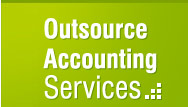 Cash
Flow Statement
Cash
Flow Statement
A cash flow statement, also
known as the statement of cash flow is a financial report depicting
amount of incoming and outgoing money during a particular time period.
The statement does not include non-cash items like depreciation, thus
making it useful for determining the short-term ability of a company to
meet its liabilities.
It summarizes the company's cash receipts and cash disbursements over a
period of time. It also lists cash to and cash from operating,
investing, and financing activities, and also the net increase or
decrease in cash for a particular period.
A cash flow statement collects, organizes and reports the cash
generated and used in the following categories:
- Operating activities: Converts the items reported on the
income statement from the accrual basis of accounting to cash.
- Investing activities: Reports the purchase & sale of
long-term investments, property, plant and equipment.
- Financing activities: Reports the issuance and repurchase
of the company's own bonds, stock and the payment of dividends.
- Supplemental information: Reports the exchange of
significant items that did not involve cash and reports the amount
of income taxes paid and interest paid
Most companies hire professionals or take the help of accountants
for getting the cash flow statements made. This helps them have an
accurate analysis of the firm's ability to meet its current liabilities.
Advantages of a Cash Flow Statement
- Helps the company to know whether it will be able to cover
payroll and other immediate expenses
- Helps the lenders to know the company's ability to repay
- Helps the investors judge whether the company is financially
sound
- Helps the newly formed companies to know their inflow and outflow
of cash and thus prevent cash shortage





